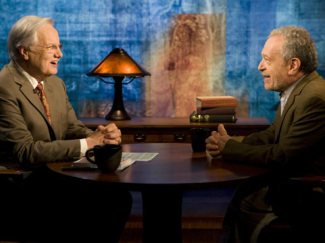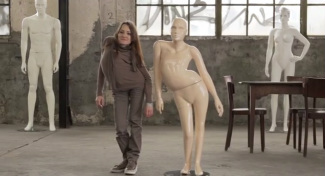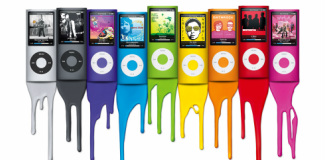 Robert Reich discusses economic inequality with Bill Moyers Robert Reich discusses economic inequality with Bill Moyers Tags: capitalism, class, consumption/consumerism, corporations, crime/law/deviance, economic sociology, globalization, government/the state, inequality, organizations/occupations/work, political economy, politics/election/voting, science/technology, robert reich, social mobility, subtitles/CC, 21 to 60 mins Year: 2013 Length: 56:46 Access: Moyers & Company Summary: In this interview on Moyers & Company, former Secretary of Labor and professor of public policy at the University of California in Berkeley, Robert Reich discusses economic inequality and the worrisome connection between money and political power. Reich notes that "Of all developed nations, the US has the most unequal distribution of income," but US society has not always been so unequal. At about the 6:20 mark, the clip features an animated scene from Reich's upcoming documentary, Inequality for All, which illustrates that in 1978 an average male worker could expect to earn $48,302, while an average person in the top 1% earned $393,682. By 2010, however, an average worker was only earning $33,751, while the average person in the top 1% earned $1,101,089. Wealth disparities have also been growing, and here Reich explains that the richest 400 Americans now have more wealth than the bottom 150 million Americans. What happened in the late 1970s to account for the current trend of widening inequality? According to Reich, there are four culprits. First (at about 19:10 min), a powerful corporate lobbying machine has successfully lobbied for laws and policies that have allowed for wealthy people to become even more wealthy, often at the expense of the poor. Examples include changes to antitrust, bankruptcy, and tax legislation. Second (at 34:00 min), Reich argues that unions and popular labor movements have been on the decline, which means employers have been under less pressure to increase wages over time. Third (at 38:30 min), while globalization hasn't reduced the number of jobs in the US, it has meant that employers often have access to cheaper labor, which has had the effect of driving down wages for American workers. He points out that in the 1970s, meat packers were paid $40,599 each year. Now they only earn $24,190. Fourth (at 38:30 min), technological changes, such as automation, have had the effect of keeping wages low. He concludes that there is neither equality of opportunity nor equality of outcome in the U.S., and unless big money can be separated from politics, the U.S. economy is unlikely to free itself from this viscous cycle of widening inequality for all (Note that a much shorter video featuring Reich's basic argument is also located on The Sociological Cinema). Submitted By: Lester Andrist
1 Comment
 What are the conditions where their food was produced? What are the conditions where their food was produced? Tags: commodification, consumption/consumerism, economic sociology, food/agriculture, marx/marxism, theory, commodity fetishm, de-fetishism, local food, 00 to 05 mins, 06 to 10 mins Year: 2011 Length: 2:27; 7:46 Access: YouTube (short version) YouTube (full version) Summary: In Marxist theory, commodity fetishism is the process by which people come to see commodities in terms of their physical properties and market value, rather than being derived from the labor and labor conditions that produced it. This is important because it obscures the social relationships between people and reduces commodities to the economic exchange between buyer and seller. Value then falsely appears to be the natural part of that commodity, rather than in the labor that produced it. For example, consider the production and consumption of chicken. In a conventional exchange at the supermarket, consumers know nothing about the labor and conditions that went into producing the chicken. The purely market-based exchange obscures and hides the exploitation and typical industrial farming methods, which are shown in this Food Inc clip or this Samsara clip, making it appear that the value of the chicken comes from the product itself. Local economies, including the local food movement, are often attempts to reverse this process by re-situating economic activity within the social relations that produced it. Through local economies, such as farmers' markets and local handicrafts, consumers can interact directly with local producers and understand the labor process and labor conditions of how goods are produced. In short, it seeks to de-fetishize the commodity. This hilarious clip from Portlandia illustrates these concepts through satire. It shows the main characters ordering a chicken dish in a restaurant, where they inquire about the conditions in which it was raised. For example, they ask about the size of its roaming area, its diet, if it is local and organic, about who is raising the chicken, and if the farmer lives locally. They learn the chicken's name is Colin and are given his "papers." In the full clip, they also travel to the farm where Colin was raised, get a tour, and meet the workers who raised Colin and the other chickens. They end up staying at the farm for 5 years, but then realize the farm is run by a cult, and ultimately return to the restaurant and inquire about the salmon. For related videos, see commodity fetishism illustrated in this Macklemore music video, and de-fetishism through a promotional fair trade video or Chipotle ad. Submitted By: Paul Dean  This ad reinforces viewers' belief in the American Dream. This ad reinforces viewers' belief in the American Dream. Tags: class, consumption/consumerism, marketing/brands, marx/marxism, nationalism, theory, american dream, commercial, ideology, 00 to 05 mins Year: 2014 Length: 0:30 Access: YouTube Summary: Ideologies are sets of ideas and beliefs through which people make sense of the social world. Ideologies are always related to power, with dominant ideologies reinforcing existing power relations. The American Dream is a particularly powerful ideology that reinforces class relations by perpetuating the belief that anyone who works hard can be economically sucessful (despite the overwhelming evidence of how class inequality shapes economic outcomes). This car commercial illustrates this ideology with a discussion of the excellence that has come out American garages: "The Wright brothers started in a garage, Amazon started in a garage, Hewlett Packard started in a garage ... the Ramones started in a garage. My point? You never know what kind of greatness can come out of an American garage." It suggests that anyone can do great things from humble beginnings, a fundamental element of the American Dream. The emphasis on "American" suggests that this idea is a uniquely American characteristic, even though upward mobility is more common in other developed countries. The ad goes on to show a Cadillac literally and metaphorically emerging from an American garage, thereby using notions of the American Dream to appeal to consumers' aspirations and nationalistic pride. It is not only an attempt to sell both Cadillac cars and attach those meanings to its brand, but also reinforces viewers' sense of the American Dream as reality. However, this association begs the question: Who does the American Dream apply to? In reality the American dream is not for the poor, but for the rich. Furthermore, it is not just the corporations that utilize the American Dream to market products to society; politicians and public figures often utilize images of the American society to convince people to support public policy, similar to how it is being used in this car commercial. For a scathing critique of the American dream, see this clip from George Carlin. Submitted By: Kelsey Gallaher  "The Scarecrow" explores the McDonaldization of society "The Scarecrow" explores the McDonaldization of society
Tags: capitalism, consumption/consumerism, corporations, environment, food/agriculture, marketing/brands, organizations/occupations/work, science/technology, theory, weber, farming, fordism, george ritzer, mcdonalidzation, rationalization, slow food, subtitles/CC, 00 to 05 mins
Year: 2013 Length: 3:23 Access: YouTube Summary: "The Scarecrow" is Chipotle's most recent commercial exploring the American dependency on highly rationalized farming techniques, which offend human conscience and wreak havoc on the environment (Note that Chipotle created a commercial with similar themes back in 2011). This animated short takes place in a dystopian universe where scarecrows punch in each day at a factory run by their crow overlords, and crow surveillance drones caw whenever production slows. The video is a useful illustration of what George Ritzer has called the McDonaldization of society, which refers to "the process by which the principles of the fast-food restaurant are coming to dominate more and more sectors of American society." Ritzer explains that McDonaldization is characterized by efficiency, calculability, predictability, and control. In and around the barren landscape owned by Crow Foods, one finds examples of efficiency everywhere. Conveyer belts efficiently move workers to their various stations in the factory, and livestock are stacked in crates, one on top of the other—an efficient use of factory space. Scanning the inner workings of the factory, it appears that ground beef, chicken, and pork are being squeezed through narrow chutes, and large blades worthy of a guillotine slice the meats into slabs with such precision that one could easily calculate and predict the amount of meat produced in any given hour. Controlling the pace of production is as easy as pulling a lever. While the video is quite literally Chipotle's straw man fantasy and is created with the aim of developing the Chipotle brand as a healthy, environmentally-friendly meal choice, the McDonaldization of food production is a very real phenomena and one sociologists take very seriously (The Sociological Cinema has also explored the issue here and here). What could be more important than understanding how a system, which was ostensibly developed to nourish vast numbers of people, is actually harmful to human health? Submitted By: Lester Andrist  Mannequins are rebuilt in this Pro Infirmis video on disability Mannequins are rebuilt in this Pro Infirmis video on disability Tags: art/music, bodies, consumption/consumerism, culture, disability, discourse/language, inequality, knowledge, disability porn, stereotypes, subtitles/CC, 00 to 05 mins Year: 2013 Length: 4:29 Access: YouTube Summary: In this four minute video from the Swiss company Pro Infirmis, five people with visible disabilities arrive at an artist's studio. After introductions, the artist begins measuring the dimensions of each person's body. His team then begins sawing into a collection of store mannequins, and once dismembered, the mannequins are reconstructed so they more closely resemble the body designs of the artist's new models. After some polish, the new mannequins are unveiled and eventually displayed in stores along one of Zurich's main streets, just in time for the International Day of Persons with Disabilities. The project's title is a rhetorical question and a command, "Because Who Is Perfect? Get Closer." Indeed, no one is perfectly able-bodied. Whether visible or invisible, on some level it is true that all bodies can be said to have "malfunctions," but the deeper reason no one is perfect is because the idea of what constitutes perfection is itself elusive. Yet, most people go about their daily lives seduced by the illusion that distinguishing "able-bodied" people from "disabled" people is as straightforward as distinguishing apples from oranges. For instance, there is a Thor fandom that celebrates Chris Hemsworth's shirtless body as the epitome of perfection. Mall shoppers too routinely evaluate clothing for themselves and others by first seeing it draped over what is supposed to be a mold of a perfect body. Capitalist institutions, from the Hollywood film industry to clothing retailers, routinely place the able-bodied ideal on a pedestal, implicitly exalting a particular type of body as the standard by which all bodies must be evaluated, and it is on this point that the Pro Infirmis video is both refreshing and subversive, for it takes what are assumed to be imperfect bodies and places them in a space typically reserved for perfect bodies. These new mannequins of unfamiliar proportions stop passersby in their tracks and encourage them to reconsider the types of bodies that belong in storefronts, but while the video captures a useful disruption in the usual discourse on bodies, in my view it fails to truly provoke onlookers to reassess their casual assumptions about bodies as either working or broken, and as either worthy or unworthy of representation. No, the video leaves this binary cultural logic unscathed. For instance, one finds in the video that "able-bodied" mannequins are the clean slate from which "disabled" mannequins are born. There is a manufacturing montage that puts to rest any radical doubts as to whether these two species of mannequin have anything in common. Finally, when displayed in the Zurich storefronts, the altered mannequins remain almost hermetically sealed from the original mannequins, which have been scuttled away for the event. To truly "get closer," as the video commands us to do, I think it is important to collapse this casual, Manichean distinction between the able-bodied and the disabled. A truly radical video might instead show the old mannequins displayed alongside the new ones, and the displays would be left in place long after the International Day of Persons with Disabilities was over. Submitted By: Lester Andrist  Apple attaches playful and whimsical meanings to its brand. Apple attaches playful and whimsical meanings to its brand.
Tags: capitalism, consumption/consumerism, corporations, culture, economic sociology, marketing/brands, marx/marxism, media, theory, apple, commodity fetishism, emotional branding, enchantment, 00 to 05 mins
Year: 1998; 2008; 2011 Length: 0:30 Access: YouTube (clip 1; clip 2; clip 3) Summary: Branding plays an increasingly important role in contemporary capitalism. Marketing industry experts describe a brand as a vision, a vocabulary, a story, and most importantly, a promise, which consumers experience through ads and products. One form of this is emotional branding, and in his book named for this approach, Marc Gobé argues that understanding emotional needs and desires, particularly the desire for emotional fulfillment, is imperative for corporate success today. Consumers unknowingly experience emotional branding throughout Apple’s wildly successful marketing. Based on a content analysis of more than 200 Apple TV ads (1984-2013), Gabriela Hybel and I found various expression of Apples’ emotional branding. They inspire feelings of happiness and excitement with playful and whimsical depictions of products and their users. This trend can be traced to the early days of the iMac, as seen in an ad (clip 1) from 1998. A 2008 iPod Nano ad (clip 2) combined playful imagery and song. In a more recent commercial (clip 3), actress and singer Zooey Deschanel, known for her “quirky” demeanor, performs a playful spin on the utility of Siri. Commercials like these — playful, whimsical, and backed by upbeat music — associate these same feelings with Apple products. They suggest that Apple products are connected to happiness, enjoyment, and a carefree approach to life. In George Ritzer’s words, they “enchant a disenchanted world.” They open up a happy, carefree, playful world for us, removed from the troubles of our lives and the implications of our consumer choices. Importantly, for Apple, the enchanting nature of these ads and the brand image cultivated by them act as a Marxian fetish: they obscure the social and economic relations, and the conditions of production that bring consumer goods to us. Now more than ever, Apple depends on the strength of its brand power to eclipse the mistreatment and exploitation of workers in its supply chain, and the injustice it has done to the American public by skirting the majority of its corporate taxes. For additional analyses of Apple’s commercials, see how they promote sentimentality, cool youthfulness, and the promise of social mobility. Note: this post was adapted from Dr. Cole’s original blog post at SocImages. Submitted By: Nicki Lisa Cole, PhD  West discusses his notion of the "habitual vision of greatness." West discusses his notion of the "habitual vision of greatness."
Tags: capitalism, commodification, consumption/consumerism, marx/marxism, social mvmts/social change/resistance, theory, alienation, commodity fetishism, conspicuous consumption, false consciousness, thorstein veblen, 00 to 05 mins
Year: 2004 Length: 5:32 Access: YouTube Summary: In this conversation between Dr. Cornel West and Tavis Smiley, West summarizes his thoughts on the “habitual vision of greatness,” or basing one’s life goals in altruistic motivations and behaviors. After discussing this vision from both religious and non-religious viewpoints, West goes on to distinguish between “success" and "greatness.” In contrast to greatness, he defines success as “pecuniary gain and financial prosperity” evidenced by “a big crib in a vanilla suburb.” Commodities become tools of division and alienation, and are fetishized by both the rich and the poor. This commodity fetishism leads people to believe that they are made human, and have a better chance of their personhood being noticed by others as they accumulate commodities. West emphasizes that this warped vision of success is directly tied to our market-driven, capitalist society. He concludes by citing the hope of Dr. Martin Luther King, Jr. and others as the foundation for leading a compassionate life, rather than a life driven by financial attainment. This video can be used in at least two classroom settings. First, in an Introduction to Sociology or Sociological Theory course, instructors can use the clip when discussing Karl Marx’s concepts of alienation, false consciousness, and commodity fetishism. This video can also be used to stimulate conversation around Thorstein Veblen’s conspicuous consumption, reflected in West’s dissection of monetary affluence flaunted with “a big crib in a vanilla suburb.” To incite discussion, instructors can ask students: What are media representations (i.e., Hollywood actors, reality TV, magazines, and advertisements) of commodity fetishism (and/or conspicuous consumption) that you see on a regular basis? Second, the clip can be used in a Contemporary Social Problems class when discussing remedies to social problems, specifically relying on West’s “habitual vision of greatness” as a potential starting point to think about social justice motivations and behaviors. Instructors can ask students: Why and how are feelings such as "hope," "compassion," and "love" important to theorize and research (and actually feel) when thinking about how to solve social problems? Submitted By: Beverly M. Pratt  Film exposes big drug companies' dangerous marketing tactics. Film exposes big drug companies' dangerous marketing tactics.
Tags: capitalism, commodification, consumption/consumerism, corporations, health/medicine, marketing/brands, pharmaceutical industry, prescription drugs, 21 to 60 mins
Year: 2007 Length: 49:23 Access: YouTube (trailer) Summary: The filmmakers of this documentary argue that "missing in the health care debate is how drug companies are putting your and your family's safety at risk in order to make more money." Money Talks: Profits Before Patient Safety exposes the questionable tactics that big drug companies use to make record profits by playing with the safety of our health care. Using misleading advertising, attractive "drug reps" who wine and dine doctors, and other unethical practices, the drug industry makes billions of dollars every year selling us unsafe, unnecessary, and overpriced drugs. The film gives an in-depth, academic perspective on the questionable marketing tactics of the pharmaceutical industry, and features the commentary of investigative journalists, former pharmaceutical sales representatives, and medical professionals including Dr. John Abramson, author of Overdo$ed America, and Alex Sugerman-Brozan, director of the Prescription Access Litigation Project. Other notable interviewees include Dr. Bob Goodman of Columbia University, founder of the "No Free Lunch" program, and Dr. Jerome Hoffman of UCLA Medical School. Money Talks: Profits Before Patient Safety was chosen by the American Library Association as one of the most notable films for adults in 2008. Submitted By: Holly Mosher  Rapper Macklemore surrounded by Nike products and symbols Rapper Macklemore surrounded by Nike products and symbols
Tags: art/music, capitalism, commodification, consumption/consumerism, marketing/brands, marx/marxism, theory, baudrillard, commodity fetishism, exchange-value, labor, lacan, surplus value, signified, signifier, symbols, use-value, 00 to 05 mins
Year: 2011 Length: 5:33 Access: YouTube Summary: Seattle rapper Macklemore's music video for his thought-provoking song “Wings” is an excellent way to introduce students to Marx’s theory of commodity fetishism. Commodity fetishism is the process of ascribing magic “phantom-like” qualities to an object, whereby the human labour required to make that object is lost once the object is associated with a monetary value for exchange. Under capitalism, once the object emerges as a commodity that has been assigned a monetary value for equivalent universal exchange, it is fetishized, meaning that consumers come to believe that the object has intrinsic value in and of itself. The object’s value appears to come from the commodity, rather than the human labor that produced it. In “Wings,” Macklemore associates this process of commodity fetishism with Nike Air Max athletic shoes, explaining his belief as a child that the shoes would make him into a superstar athlete like Michael Jordan. The value of Nike shoes is displaced from the labour time that went into creating them, and instead is infused with an intrinsic value that comes into being through celebrity endorsement or symbols such as the iconic Nike “Swoosh.” “Wings” becomes a statement on how market capitalism seduces us into purchasing products that promise to make our lives better. Macklemore comes to this realization through the song’s narrative, exclaiming, “Nike tricked us all,” before finally realizing as the song comes to an end that “it’s just another pair of shoes.” Through tracks like “Wings,” Macklemore explores the darker side of consumption, urging listeners to critically rethink the messages imposed on us in capitalist societies that make us feel the need to constantly consume. This video can also be used to teach and distinguish among Marx's notions of use-value and exchange-value, as well as his concept of surplus-value, which is the surplus or profit earned by the capitalist, above and beyond the use-value (labour power) required to produce the object. Viewers may be urged to identify the use-, exchange-, and surplus-values of the Nike shoe in the video. How is value made? Why do we pay $180 for a pair of Nike shoes, but only $20 for a pair of Sketcher shoes? In addition, this video bolsters discussion about the power of symbols and signification (and Baudrillard’s notion of sign-value) in creating cultural meaning embodied in a commodity sign (e.g., the Swoosh on the Nike shoe, or the Apple symbol on an iPhone). Instructors can ask students to name other symbols in popular culture and what they mean to them. Drawing upon Jacques Lacan’s idea of the signifier and signified, instructors can expand the discussion of symbols by asking students to discuss the role of brand symbols in their life. Have they become a part of their identity? Their culture? Their daily lives? In the end, Macklemore speaks to this point: his Nikes are “so much more than just a pair of shoes.” They are “what I am… the source of my youth… the dream that they sold to you.” For another post on The Sociological Cinema that uses Macklemore's music videos to teach sociological concepts, click here. Submitted By: Patricia Louie  Scene from LA Times video, "The Challenge Ahead" Scene from LA Times video, "The Challenge Ahead"
Tags: abortion/reproduction, consumption/consumerism, demography/population, environment, food/agriculture, globalization, inequality, rural/urban, 06 to 10 mins
Year: 2012 Length: 5:12 Access: Los Angeles Times Summary: This short video, "The Challenge Ahead: Rising Numbers, Shrinking Resources," accompanies a five-part series from the Los Angeles Times and highlights the causes and consequences of the global population explosion. Demographers anticipate continued population growth driven by the reality that there are now 3 billion people on the planet under the age of 25, and about 1.2 billion of them are adolescents who are entering their reproductive years. Projections suggest that by 2050 there will be well over 9 billion people on the earth, and the video highlights many of the resource demands of this many people. For instance, Jonathon Foley of the Institute on the Environment asks, "how are we going to feed 9 billion people without trashing the planet?" and Joel E. Cohen notes that humans are currently consuming resources on planet earth as if the earth were about 50% more productive. The connection between consumption (and production) and population is also explored in Foley's 2011 Ted Talk, where he reports that the total area humans are currently using for agriculture is about the size of South America (16 million square kilometers), while the total area used as pasture and range land is about the size of Africa (30 million square kilometers). Humans are also currently using about 50% of Earth's fresh water, and of this share, about 70% is used for agriculture. But after connecting population growth to agricultural demands, it is only a short distance to discussions exploring the connections between population and environmental degradation, or even climate change. After all, as Foley also points out in his Ted Talk, agricultural activity is by far the largest contributor of greenhouse gases. Thus "The Challenge Ahead" is an excellent teaser for any introduction to the field of demography, and it can be used to spur discussion about the importance of the field for tackling some of the most formidable challenges of the twenty-first century. Note that The Sociological Cinema has previously recommended clips that explore problems associated with population (here, here, and here). Submitted By: Lester Andrist |
Tags
All
.
Got any videos?
Are you finding useful videos for your classes? Do you have good videos you use in your own classes? Please consider submitting your videos here and helping us build our database!
|
 RSS Feed
RSS Feed
